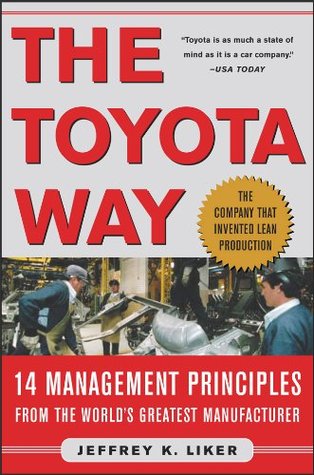More on this book
Community
Kindle Notes & Highlights
Read between
April 19, 2020 - September 29, 2024
Takt is a German word for rhythm or meter. Takt is the rate of customer demand—the rate at which the customer is buying product. If we are working seven hours and 20 minutes per day (440 minutes) for 20 days a month and the customer is buying 17,600 units per month, then you should be making 880 units per day or one unit every 30 seconds. In a true one-piece flow process, every step of the process should be producing a part every 30 seconds. If they are going faster, they will overproduce; if they are going slower, they will c...
This highlight has been truncated due to consecutive passage length restrictions.
Continuous flow and takt time are most easily applied in repetitive manufacturing and service operations. But with creativity the concepts can be extended to any repeatable process in which the steps can be written out ...
This highlight has been truncated due to consecutive passage length restrictions.
completing bills of materials for engineering of ships, processing people through a security office of a Navy shipyard, processing new members into a professional association, reimbursing employees for expenses, processing job applicants …. And you can think of many more. Obviously, it's easiest to apply the concepts of takt time and one-piece flow in relatively high-volume and repetitive service operations in which there is some consistency in the cycle time per unit, but the Toyota Way is never satisfied with doing only what is easy.
When you try to attain one-piece flow, you are also setting in motion numerous activities to eliminate all muda (wastes). Let's take a closer look at a few of the benefits of flow. 1. Builds in Quality. It is much easier to build in quality in one-piece flow. Every operator is an inspector and works to fix any problems in station before passing them on. But if defects do get missed and passed on, they will be detected very quickly and the problem can be immediately diagnosed and corrected. 2. Creates Real Flexibility. If we dedicate equipment to a product line, we have less flexibility
...more
3. Creates Higher Productivity. The reason it appears that productivity is highest when your operation is organized by department is because each department is measured by equipment utilization and people utilization. But in fact it is hard to determine how many people are needed to produce a certain number of units in a large batch operation because productivity is not measured in terms of value-added work. Who knows how much productivity is lost when people are "utilized" to overproduce parts, which then have to be moved to storage. How much time is lost tracking down defective parts and
...more
4. Frees up Floor Space. When equipment is organized by department, there is a lot of bits of space between equipment that are wasted, but most of the space is wasted by inventory—piles and piles of it. In a cell, everything is pushed close together and there is very little space wasted by inventory. By making g...
This highlight has been truncated due to consecutive passage length restrictions.
5. Improves Safety. Wiremold Corporation, one of the early adopters of TPS in America, has an exemplary safety record, winning a number of state safety awards. Yet when they worked to transform their large-batch-process company to one-piece flow, they decided not to put in place a special safety program. Art Byrne, the former president and a student of TPS, led the transformation and knew that one-piece flow would naturally improve safety, because smaller batches of material would be moved in the factory. Smaller batches meant getting rid of forklift trucks, which are a major cause of
...more
This highlight has been truncated due to consecutive passage length restrictions.
Product is moving everywhere. There is no coordination of the product across departments. No amount of scheduling can control the inherent variation in the system when that system causes materials to move every which way.
So, life is good and all your problems and pains simply disappear by creating one-piece flow cells. Not by a long shot! In lean thinking, life will get tougher for a while—at least until you learn how to continuously improve your processes. Ohno explained: In 1947, we arranged machines in parallel lines or in an L shape and tried having one worker operate three or four machines along the processing route. We encountered strong resistance among the production workers, however, even though there was no increase in work or hours. Our craftsmen did not like the new arrangement requiring
...more


